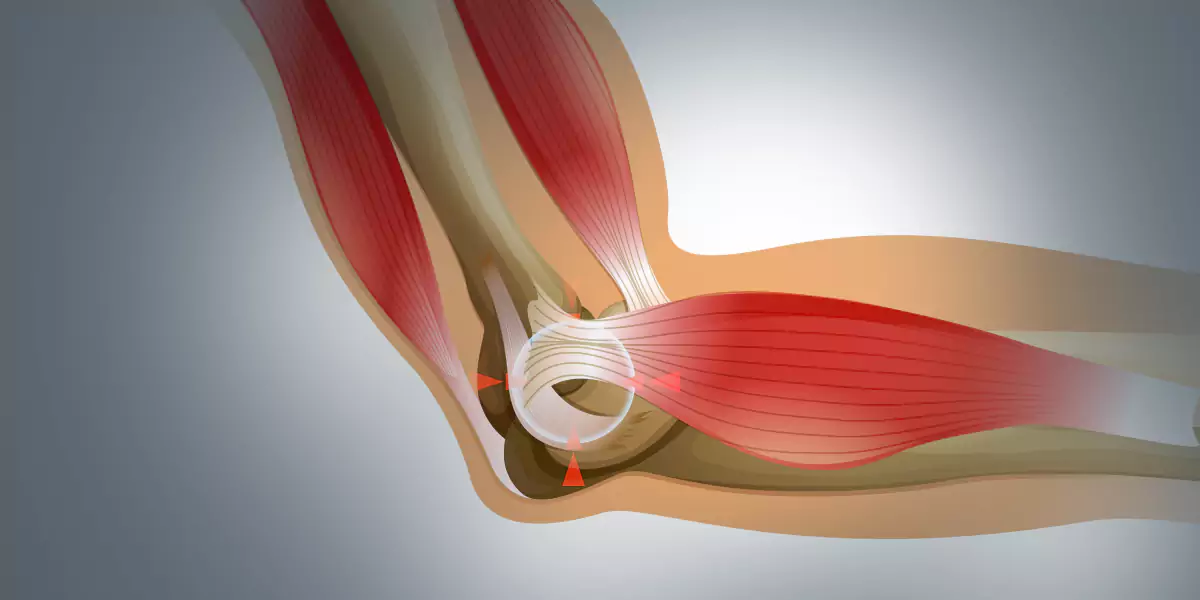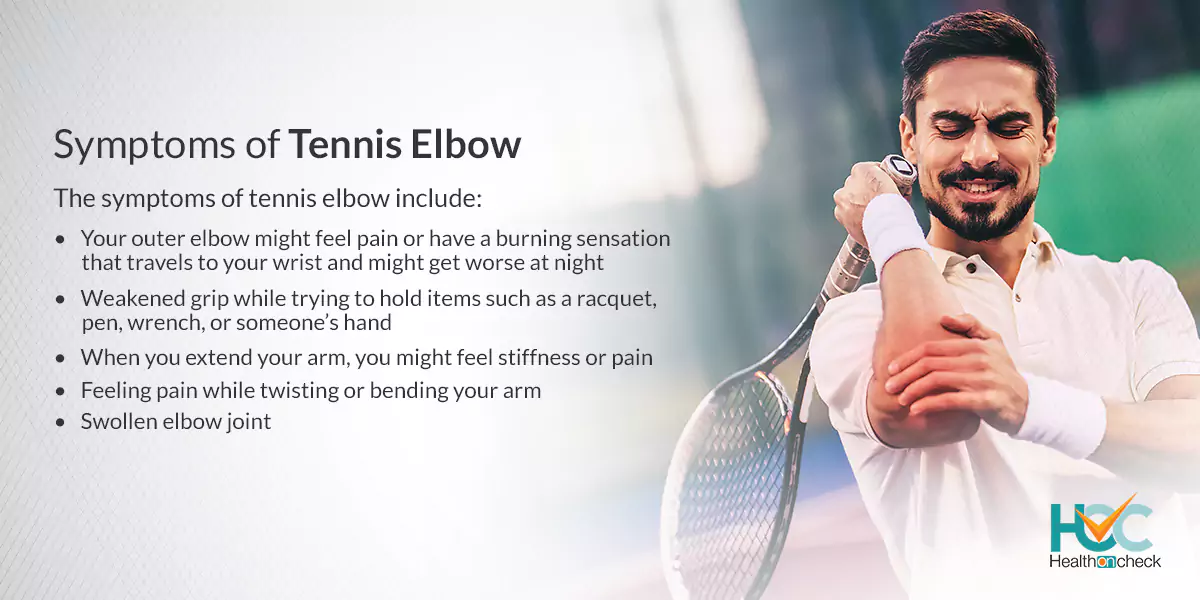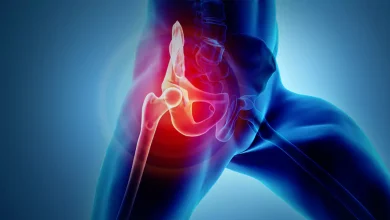What is a Tennis Elbow?

Tennis elbow, also called lateral epicondylitis, is a condition that occurs due to overuse of muscles and tendons in the elbow. Tennis elbow is usually related to recurrent motions of the wrist and arm. It got its name because tennis players who grip their racquets too tightly are often affected by it but this painful condition can affect anyone, especially people whose jobs involve repeated movements such as carpenters, plumbers, butchers, and painters. Tennis elbow can result in pain while bending or straightening your arms or gripping or lifting objects.
What are the symptoms of Tennis Elbow?
The symptoms of tennis elbow include:
– Your outer elbow might feel pain or have a burning sensation that travels to your wrist and might get worse at night.
– Feeling pain while twisting or bending your arm.
– When you extend your arm, you might feel stiffness or pain.
– Swollen elbow joint.
– Weakened grip while trying to hold items such as a racquet, pen, wrench, or someone’s hand.

What are the Causes of Tennis Elbow?
Tennis elbow is usually connected to overuse and muscle strain but the exact cause is not clear. At times, frequent tensing of the forearm muscles used to raise and straighten the hand and wrist prompts the symptoms. This might result in a breakdown of the fibres in the tendon that connects the forearm muscles to the bony bump at the outside of the elbow.
Activities that can lead to tennis elbow symptoms include:
– Playing racquet sports.
– Usage of plumbing tools.
– Painting walls.
– Driving screws.
– Cutting up foods for cooking, specifically meat.
– Using a computer mouse quite often and for a long period.
– Injury or any condition impacting the body’s connective tissues results in tennis elbow but why it happens is not yet clear.
What are the Risk Factors of Tennis Elbow?
The risk factors of tennis elbow include:
-Age
Even though tennis elbow can affect people of any age but adults between the ages of 30 and 60 are more prone to it.
– Work
People with jobs that involve using the wrist and arm frequently including plumbers, painters, carpenters, butchers, and cooks have an increased risk of developing tennis elbow.
– Specific sports
Playing racquet sports for more than two hours a day raises the risk of tennis elbow.
Other risk factors might include smoking, obesity, and certain medicines.
What are the Complications of Tennis Elbow?
Pain from tennis elbow can impact work or your ability to do physical activities. It also affects your grip, making it difficult for you to grasp objects. In general, tennis elbow doesn’t cause serious, long-term problems.
How is the Tennis Elbow Diagnosed?
To diagnose tennis elbow, your doctor will first carry out a physical exam to check if there is elbow joint pain, stiffness, and swelling. They might also ask about activities that can lead to pain. For a diagnosis, your doctor might prescribe these tests:
– X-rays
It’s done to rule out other conditions such as arthritis or a broken bone.
– Imaging tests
It includes ultrasound, magnetic resonance imaging (MRI), or computed tomography (CT) scans, to assess tendon and muscle damage.
– Electromyography (EMG)
It is performed to examine compressed nerves by measuring muscle and nerve electrical activity.
What are the Treatment Options Available for Tennis Elbow?
The treatment options available for tennis elbow include
– Shots
Various types of shots such as corticosteroids and platelet-rich plasma are given into the affected tendon to treat tennis elbow. Botulinum toxin A (Botox) or an irritant solution, either sugar water or salt water, known as prolotherapy are also given but rarely.
– Dry needling,
Here a needle is gently pierced into the damaged tendon in several places, which can be helpful.
– Rest.
You might be advised not to do things that increase elbow pain.
– Pain relievers
Pain relievers including ibuprofen (Advil, Motrin IB, others) or naproxen sodium (Aleve) are given to reduce pain.
– Ice
Applying ice or a cold pack in the affected area for 15 minutes 3 to 4 times a day can be helpful.
– Needle fenestration
In this procedure, ultrasound is used to guide a needle through a numbed tendon repeatedly and it begins a new healing process in the tendon.
– Ultrasonic tenotomy
Also known as a TENEX procedure, it’s the same as needle fenestration, where ultrasound is used to guide a special needle through the skin and into the affected part of the tendon. It vibrates the needle so rapidly that the damaged tissue turns to liquid which is then sucked out.
– Extracorporeal shock wave therapy
Here shock waves are sent to injured tissue to reduce pain and help the tissue to heal.
– Surgery
In some cases where the symptoms do not improve even after 6 to 12 months of taking other treatments, surgery is performed to get rid of damaged tissue.
Living with Tennis Elbow?
People who do activities that need frequent arm motions (extending and bending) might develop tennis elbow. You should consult with your doctor if bending and straightening your arm is causing pain or if your outer elbow is tender while touching. Your doctor might give you suggestions to decrease inflammation and pain. People with tennis elbow might require surgery also but it’s very rare. With proper treatment, you can return to your normal life and do activities you enjoy.
Whom to Consult?
If you notice symptoms of tennis elbow and self-care steps like rest, ice, and pain relievers are not reducing your elbow pain and tenderness, then you should consult with your doctor. Along with other treatments, exercises for rebuilding strength and regaining use of the elbow are important for recovery.




